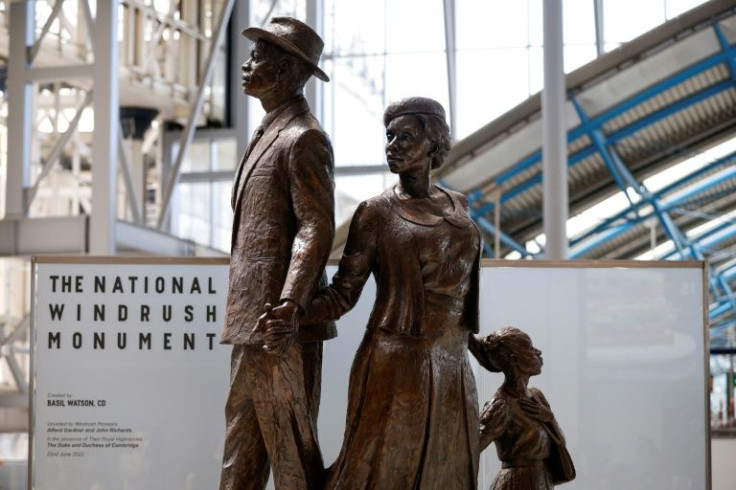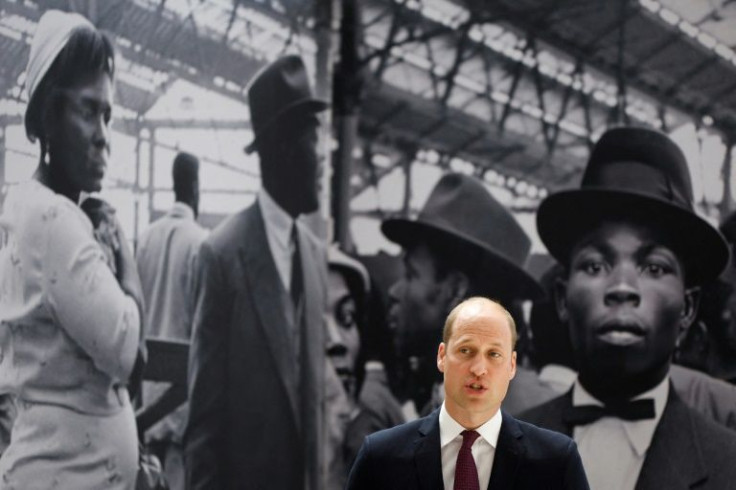New UK Statue Unveiled To Post-war Caribbean Migrants
Prince William on Wednesday unveiled a new national monument to the "Windrush" generation of Caribbean migrants who moved to Britain following World War II, praising their "immense contribution" to national life.
The 12-foot (3.65-metre) bronze statue, which depicts a man, woman and child standing on top of suitcases, will greet millions of rail commuters at London's Waterloo station.
"Over the past seven decades, the Windrush Generation's role in the fabric of our national life has been immense," said William.
"Every part of British life is better for the half a million men and women of the Windrush Generation.
"I want to say a profound thank you to every member of that generation, and the generations that have followed," he added.

The decision to erect a monument followed a scandal that first emerged in 2017 and caused much soul-searching about racism past and present in Britain.
Campaigners revealed that thousands of Britons of Caribbean origin, who arrived legally between 1948 and the early 1970s, had been wrongly detained or deported under the government's hardline immigration policies.
The government then announced "Windrush Day" would be celebrated each year on June 22, and that it was contributing ?1 million ($1.22 million) in funding for a national statue.
Jamaican artist Basil Watson was chosen by a Windrush Commemoration Committee from an initial long list of 16 artists to create the work.
The community is named after the MV Empire Windrush ship, one of the vessels that brought workers from Jamaica, Trinidad and Tobago, and other islands to help fill post-war UK labour shortages during that period.
One of the Windrush passengers, Alford Gardner, said the statue dedicated to his generation that "worked hard" was one of a kind.

"It means everything. I never expected anything like this," the 96-year-old told AFP after the unveiling.
Gardner said while the statue was a "big contribution", he called for government compensation over the scandal be delivered "quicker".
The Guardian newspaper on Wednesday reported that only one in four applicants to a compensation scheme had received payments.
The artist said the monument recognised the "dreams and aspirations, courage and dignity, skills and talents" of the Windrush generation.
"My parents, along with a great many others, took the long arduous voyage from the Caribbean with very little or nothing other than their aspirations, their courage and a promise of opportunity for advancement," Watson said.
"This monument tells that story of hope, determination, a strong belief in selves and a vision for the future," he added.
Watson's own parents were members of the Windrush generation and he spent part of his childhood in Britain.
Angela Wilson, whose parents also came to the UK from the Caribbean, told AFP the statue was a "wonderful acknowledgement" of their contribution.
"It's nice to know that every time someone walks past the statue, they will remember that the Windrush generation put on their best clothes... and set out for the UK to help rebuild what they considered to be our home."
But she said she also "looked forward to the Home Office righting the wrongs to make sure everyone has the documentation they need to prove themselves to be British citizens and that they are compensated if they have suffered any loss or injustice".
© Copyright AFP 2024. All rights reserved.







